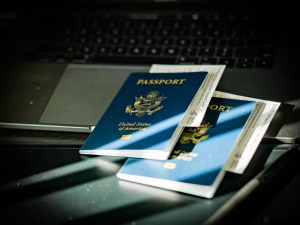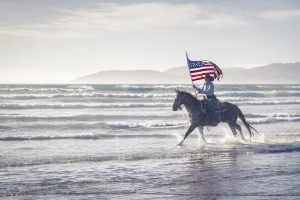The 2025 H-1B visa update introduces a $100,000 employer fee, replaces the lottery system with a wage-based selection process, and enhances eligibility and wage requirements. Existing holders keep current terms for renewals. New applicants face higher costs, stricter reviews, and lower chances of selection for low-salary roles.
This article lists every new rule, who it affects, and how to prepare your petition under the 2025 policy.
What These Changes Mean for Existing Holders vs New Applicants?
The 2025 H-1B visa changes have divided applicants into two groups: existing holders and new applicants. Current holders remain exempt from the new $100,000 fee, while new applicants face higher costs, updated wage rules, and revised selection criteria.
For Existing Holders
Visa Extensions and Renewals: What’s Changing in 2025
The $100,000 H-1B visa fee does not apply to current visa holders. Renewals or extensions filed before September 21, 2025, continue under existing rules. USCIS confirms the new fee is only for new petitions. If you are already in the U.S. on H-1B status, you can extend your stay without paying the additional fee.
Edge cases like international travel or employer changes may still create confusion. Keep your approval notices and prior petition copies ready when renewing or re-entering.
Must Read: USA Visa for Indians
Travel Rules, Consulate Delays, and Re-Entry Concerns
Current H-1B holders can travel and return normally, but companies advise avoiding travel until official guidance stabilizes. Border and consular officers may request proof that your petition was filed before the cutoff. Carry:
- Latest I-797 approval notice
- Employment verification letter
- Proof of petition date before Sept 21, 2025
These documents can prevent re-entry delays or additional questioning.
Impact on Job Changes and Employer Transfers
Job changes or amendments can trigger a new petition. If the transfer or role change involves travel or consular processing, it might fall under the new fee rule. Transfers filed within the U.S. without international travel remain exempt.
Until USCIS issues clear instructions, assume petitions filed after September 21, 2025, may face added review. Plan any transfer or travel accordingly and coordinate with your employer’s immigration team.
For New Holders
Lottery System Updates and Selection Chances
The FY 2026 H-1B lottery replaces the random draw with a wage-based selection model, giving priority to petitions offering higher salaries and advanced roles. Lower-wage or entry-level positions will have reduced selection chances, as the system focuses on high-skill, high-value professionals.
Employers must ensure job offers meet accurate occupational codes and prevailing wage levels to stay competitive under the new selection method.
Salary Threshold and Eligibility Criteria for First-Time Applicants
A $100,000 employer fee now applies to all H-1B petitions filed for workers outside the U.S. after September 21, 2025. The fee is one-time, non-refundable, and required per applicant. Cap-exempt employers, universities, nonprofits, and research institutions are excluded.
The Department of Labor has raised prevailing wage levels to match market standards. Each applicant must have a bachelor’s degree or higher in a specialty field related to the job, and employers must prove the role is a specialty occupation that meets wage compliance requirements.
Tips to Improve Your H-1B Petition Success Rate
- Offer a competitive salary to rank higher under the wage-based system.
- Submit complete and verified educational and employment documents.
- Use cap-exempt categories where available for better approval odds.
- File early within registration windows to avoid technical disqualification.
- Avoid international travel during processing to prevent administrative delays.
- Engage experienced immigration counsel to ensure petition accuracy and compliance.
Must Read: USA Visa Appeal for Indians
Recent Headlines & Policy Changes
Here are the most important 2025 H-1B visa updates you need to know:
-
The $100,000 Salary Threshold Proposal
-
New Rulemaking and Immigration Reforms in 2025
-
Congressional Actions & Legal Challenges
From Sept 21, 2025, employers filing new H-1B petitions for beneficiaries outside the U.S. must pay a $100,000 fee. It excludes renewals and current holders. Non-payment leads to automatic petition rejection.
DHS’s Jan 2025 rule redefined “specialty occupation,” added stricter wage verification, and targeted fraud control. USCIS plans a wage-based lottery favoring higher salaries. Prevailing wage levels are also under revision.
Congress is debating the American Tech Workforce Act, proposing a $150K wage floor and lottery removal. Multiple lawsuits challenge the $100K fee as unconstitutional. Federal courts are reviewing injunctions against enforcement.
Must Read: USA Visa Photo Requirements for Indians
Applicant Guidance & Best Practices
-
How to Prepare Your H-1B Filing to Reduce Rejection Risk?
-
What to Do If Your Petition is Denied?
-
Premium Processing: Latest Status, Fees, and Timeframes
Submit complete, error-free documents with verified job titles and SOC codes. Align job duties with a clear specialty occupation. Ensure the LCA wage meets or exceeds the prevailing wage. Use consistent information across Form I-129, LCA, and offer letter. Include strong proof of education, employer-employee relationship, and company legitimacy. File during the correct window and track USCIS updates.
Review the denial notice for the exact reason. File a motion to reopen or reconsider (Form I-290B) if there is a factual or legal error. If ineligible for appeal, correct deficiencies and refile next season. Consider alternative visas (L-1, O-1, F-1 OPT STEM). Maintain a valid status during the appeal or transition to another visa category.
Premium Processing remains available for H-1B petitions at a USCIS fee of $2,805, guaranteeing a decision within 15 calendar days. Delays may occur if USCIS issues an RFE. This service is optional and separate from the $100,000 proclamation fee. It can be filed with Form I-129 or added later using Form I-907 for faster adjudication.
Must Read: USA Visa Rejection for Indians
Impact Stories & Case Studies
Applicants Affected by New Rules
Case Study 1: H-1B Workers Abroad Rushing to Return
Situation: After President Trump’s proclamation that new H-1B petitions must include a $100,000 employer payment and that entry without that payment would be refused, many H-1B visa holders outside the U.S. scrambled to return before the change took effect.
Details:
- Reuters reported firms urging their employees abroad (e.g., in India, China) to return immediately, sometimes abandoning travel plans or leaving halfway, to avoid the risk of being denied reentry under the new rule.
- Some workers already traveling or scheduling stamping appointments before Sept. 21 accelerated their timelines or cancelled planned foreign visits.
Impact:
- Sudden flights, travel disruption, stress, and uncertainty.
- Those who remained abroad feared being denied entry, even if they held valid visas.
- Employers faced coordination, costs, and potential interruption in the workforce.
Case Study 2: New Overseas Hire Gets Rescinded Offer
Situation: A U.S. employer extended an offer to a skilled candidate living overseas (e.g., in India), with the intent to file a new H-1B petition. After the fee proclamation, the employer retracted the offer due to cost uncertainty.
Details:
- The American Immigration Council notes the $100,000 fee could render many sponsorships “unaffordable” for new hires.
- Analyses like Harris & Sliwoski’s commentary illustrate how hires abroad become disproportionately penalized under the new regime, compared to internal conversions or renewals.
- Because the new rule singles out new petitions from abroad, employers may avoid selecting overseas candidates in favor of domestic or internal options.
Impact:
- Candidate loses offer and must pivot (e.g., alternate country, remote role).
- Employer avoids risk but loses access to the global talent pool.
- Distorts hiring priority toward candidates already inside the U.S.
Employers Responding to the New Salary or Regulatory Pressure
Case Study 1: Large Tech Firms Limiting Entry-Level Sponsorship
Situation: Major technology companies historically sponsoring many early or mid-level foreign engineers (salary in $90,000–$130,000 range) change policy post-proclamation.
Details:
- News and analysis sources (e.g., American Immigration Council) warn that the $100,000 fee makes smaller or lower-salary sponsorships untenable, pushing firms to restrict sponsorships to senior/high-wage roles only.
- Business press and tech commentary echo concerns that new hires must now be “sufficiently high paid” to rationalize the cost, disincentivizing sponsorship of fresh grads or standard roles.
Impact:
- Drop in H-1B petitions from these firms at lower salary tiers.
- Firms restrict hiring to high-value, high-skill roles.
- Shift in recruitment toward domestic hires or contractors rather than visa sponsorship.
Must Read:
Case Study 2: Nonprofit / Health / Educational Institutions Joining Legal Challenge
Situation: Hospitals, religious organizations, and universities heavily dependent on H-1B workers respond via litigation rather than internal cutbacks.
Details:
- A coalition of health care providers, educational and religious organizations filed a lawsuit in San Francisco seeking to block the $100,000 fee.
- The plaintiffs argue that the fee disrupts critical sectors (education, medical, pastoral) and was imposed without proper statutory authority or notice.
Impact:
- The lawsuit may delay or block enforcement, giving these institutions breathing room.
- They signal they will not accept wholesale cancellation of hiring, but instead challenge the rule legally.
- Raises public and political awareness of disruption in essential services.
Must Read: USA Visa Extension for Indians
Predictions & What’s Next
Expected Legal Challenges & Their Likely Outcomes
- $100K H-1B fee challenged in federal court.
- Likely partial injunction within months.
- Entry restrictions may stay active.
- DHS may reissue a narrower interim rule.
- Weighted lottery faces procedural suits.
- More RFEs and slower processing expected.
- Employers shifting to O-1, L-1, EB visas.
Policy Proposals in the Pipeline for 2026
- Raise H-1B minimum salary to $150K.
- End random lottery; adopt wage-based selection.
- Update the prevailing wage formula by region.
- Expand employer audits and site checks.
- Add exemptions for STEM and critical roles.
- Require Congressional approval for future visa fees.
- Remove per-country limits on employment visas.
- Introduce fee relief for startups/SMEs.
How This Impacts the Tech Sector, SMEs, Startups?
- Large tech absorbs costs; keeps hiring.
- SMEs, startups reduce or stop sponsorships.
- Offshoring and remote hiring increase.
- Mid-level foreign talent declines.
- O-1 and EB-2 NIW visas gain traction.
- Domestic hiring and training prioritized.
- Outsourcing firms face cost pressure.
- H-1B hiring concentrates in major tech firms.
Must Read: Visa Free Countries for USA Passport Holders [Including VOA, eVisa & ETA]


FAQs
What is the H-1B visa, and who can apply?
The H-1B is a non-immigrant U.S. visa for foreign workers in specialty occupations requiring a bachelor’s degree or equivalent. You apply via employer sponsorship.
What are the latest updates on the H-1B visa rules in 2025?
As of September 21, 2025, new petitions filed for beneficiaries outside the U.S. require a $100,000 employer payment. Also, reforms propose a wage-based lottery, higher wage floors, and stricter integrity measures.
What is the annual cap on H-1B visas?
The statutory cap is 65,000 regular visas plus 20,000 for U.S. master’s degree holders.
When does the H-1B application process window open each year?
Typically, USCIS opens registration around March for the next fiscal year (starting October 1).
How long does it take for an H-1B visa to get approved?
Standard adjudication may take months; premium processing guarantees 15 calendar days for certain petitions.
What are the new wage level H-1B visa requirements 2025 for applicants?
While no final rule exists yet, proposals suggest raising the wage floor to $150,000 and adopting a weighted selection favoring high wages.
What happens if my H-1B petition is denied?
You may file a motion to reopen or reconsider with USCIS, consider reapplication, or explore alternative visa categories.
Is it possible to extend or renew an H-1B visa?
Yes, renewals are allowed, and the new $100,000 fee does not apply to them, under current guidance.





















